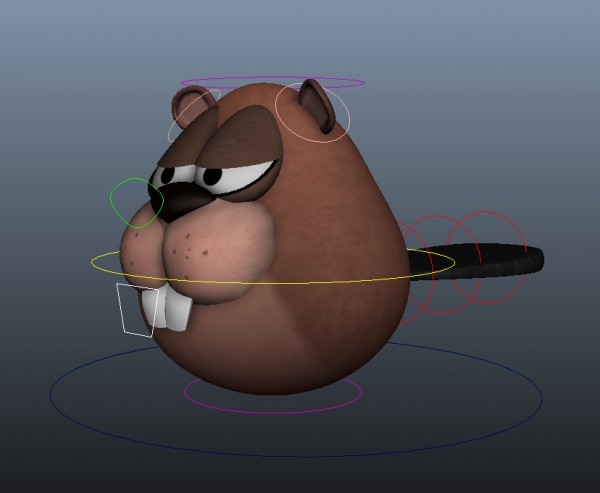

FARMINGTON – A local entrepreneur is looking to introduce a 3D animation course at the University of Maine at Farmington this May, with an eye toward the future development of a local studio.
Steve Milligan of Sidney will be teaching “Introduction to 3D Animation,” which will use industry-standard systems and programs to introduce students to the world of 3D animation. The class will consist of small exercises and three to four larger projects, each teaching the principles of animation. If successful, Milligan said, he hopes to continue teaching the course in the fall or spring semester.
“We will begin with the basics, how to make things move,” Milligan said. “We will work our way from just making things move, to making things come alive. That’s where the magic happens.”
A graduate of Mountain Valley High School in Rumford, Milligan first became enthralled with 3D animation in 1995, after seeing the movie ‘Toy Story.’ The movie’s style, Milligan said, was particularly enticing due to his own strengths and weaknesses as an artist: while he could visualize his creations in his head, he was never a strong 2D artist. He began following 3D animation work in the media and Internet, using an old copy of animation software and a lot of trial and error to begin modeling objects. He began freelancing, which led to work with the Maine Arts Commission, a 4-year stint in a design studio as a graphic and web designer and, most recently, a position with UMF’s marketing department.
After taking a 21-month program called Animation Mentor in 2013-14, Milligan was able to animate his models. It wasn’t long before he had his first 3D animation job: creating a series of animated models for Intel’s RealSense software. He created a boy’s face, which was synced to lines in Dutch and German.
“I had no idea what I was making the little fella say,” Milligan said, “but he sure looked good.”
All along, Milligan has had the idea of opening a local 3D studio in Maine. Large studios are mostly on the west coast, with smaller ones scattered throughout the country, but Milligan says that there is little 3D activity in New England and none that he’s aware of in Maine. With broadband Internet access increasing, Milligan believes that a Maine studio could be successful by offering services nationwide.
“I have had this seed of an idea since I was a teenager,” Milligan said. “I always knew I was going to try to get into a feature film studio, and if it didn’t work out, I was going to start my own studio, because I really, really love Maine and I want to stay here.”
Years ago, Milligan began speaking at local schools, hosting animation workshops and generally doing everything he could to introduce local people to the concept. He’s continuing to do freelance work in an effort to create a portfolio and brand that could be leveraged into a brick and mortar studio. When he launches his studio, Milligan said, he’s hoping that he has laid groundwork that might allow some Maine residents to follow in his footsteps.
The course in May is another step toward that goal. Students will start with simple characters, such as a ball, and work up to using an animated beaver that Milligan created specifically for the class (a brief video featuring that character can be seen here). Students will be using SyncSketch to upload and evaluate their work and Autodesk Maya, which is the same program used by companies such as Disney, Dreamworks and Blue Sky Studios. No prior experience is required, and Milligan said that someone interested in becoming a 2D or stop-motion animator could also benefit from the course.
Those completing the course will have a good idea of the principles of animation, Milligan said. “They will at this point have a clear idea if animation is something they would like to pursue, or if it’s not really their cup of tea.”
His hope is to grow the May term course into a standard offering at UMF in the spring or fall semester, and eventually add other classes to accommodate students that would like to further pursue animation.
Introduction to 3D Animation will run May 18 through June 11; Monday through Thursday from 4 p.m. to 7 p.m. At least eight students need to register for the course to take place, and Milligan is hoping to sign up 15. It is open for UMF and non-UMF students.






How about having him teach an adult Ed course? It would be wonderful.
I’m passionate about animation. I’d teach anywhere that would have me/that was reasonable for me to do.
If you have any suggestions or contacts, please do email me at stevem3d@gmail.com
I’d love to hear from you.
How much is the class?
This is an unbelievable opportunity for this region. Steve’s work with my students has energized several to take a serious look at digital animation and modeling as a career opportunity. Here’s to hoping he has to run another session in the fall due to demand.
Karen,
I believe UMF’s Maine Resident price is $261 per credit. This course is a 4 credit course, bringing the total to $1044. Assuming I did my math correctly and that the credit hour price is up to date.
Steve